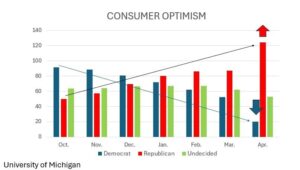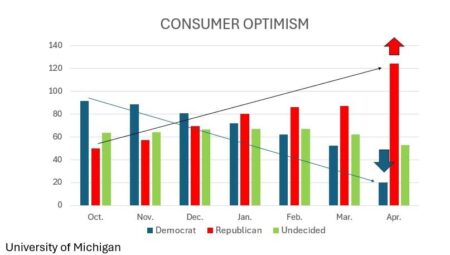Victor Orlovski is founder of R136 Ventures, a Silicon Valley-based VC firm focused on scaling mid- and late-stage B2B and fintech startups.
The pendulum has swung. I believe tech’s “growth at all costs” era is officially over in 2025, with investors now scrutinizing efficiency metrics alongside growth figures. For CEOs navigating Series B through D funding, this shift demands a new approach: balance.
What makes a company truly sustainable isn’t explosive growth or relentless cost-cutting, but the equilibrium between these competing priorities. Single-dimensional metrics can create areas of weakness that often become apparent right when companies need to impress Series C investors. Instead, successful companies now track “balance metrics” that ensure they’re building for both today and tomorrow.
Let’s explore five balance metrics reshaping how tech companies operate in 2025:
1. The Rule Of 60
The “Rule of 40” has evolved. Today’s benchmark—the “Rule of 60″—states that your growth rate plus profit margin should exceed 60%. This formula scales with your company’s maturity:
• Series B: 60% growth with -20% margins
• Series C: 40% growth with 20% margins
• Series D: 25% growth with 35% margins
Klaviyo exemplified this balance pre-IPO, scoring 66% (42% growth plus 24% profitability) and securing premium valuation despite market headwinds. Your position relative to this benchmark creates clear decision paths: Above 70% allows growth investment, while below 50% demands immediate attention to either growth or margins.
2. Burn Multiple
While the Rule of 60 provides the big picture, your Burn Multiple reveals how efficiently you’re converting cash into growth. This ratio—cash burned divided by new ARR added—can separate companies using funding wisely from those burning money without proportionate returns.
In my experience, elite companies maintain a Burn Multiple below 0.5x, generating $2 in new ARR for every $1 burned. When your Burn Multiple trends upward, it’s an early warning to recalibrate before cash constraints force more painful decisions.
3. Gross Margin-Adjusted CAC Payback
Moving beyond basic customer acquisition metrics, companies can now measure how quickly a customer’s gross profit—not just revenue—covers acquisition costs. This nuanced approach requires segmented targets:
• Series B: 12-18 months overall payback
• Series C: Different thresholds for enterprise (18-24 months) versus SMB (12 months)
• Series D: Channel-specific targets that acknowledge different acquisition economics
Snowflake mastered this balance pre-IPO, accepting longer paybacks for enterprise customers who delivered substantially better lifetime value. This segmented approach allowed them to efficiently expand across multiple customer tiers simultaneously.
4. Innovation Efficiency Index
The race to build new features often creates a technical debt time bomb. The Innovation Efficiency Index balances progress against the foundation supporting it by combining feature velocity, engineering allocation and technical debt accumulation.
Each growth stage demands a different emphasis in this balance:
• Series B: Prioritize feature velocity to achieve market fit.
• Series C: Implement the “20% rule” for technical debt management.
• Series D: Incorporate security and compliance into the equation.
One way to achieve this balance is by implementing quarterly “tech debt sprints” to reduce infrastructure costs and accelerate feature delivery.
5. Revenue Per Employee
As talent costs rise and AI transforms work, Revenue per Employee has become a definitive metric for operational efficiency during scaling. This simple calculation—annual revenue divided by full-time employees—reveals whether your organization gets more or less efficient as it grows.
The benchmarks progress with company maturity:
• Series B: $150K-$200K per employee
• Series C: $200K-$250K per employee
• Series D: $250K-$350K per employee
The goal isn’t extracting more from your team but ensuring you add the right roles at the right time while continuously optimizing workflows.
The Balanced Future
These five metrics can work together as a system, creating a framework for sustainable growth that can satisfy both investors and operational realities. As I see it, the companies thriving in 2025 aren’t those growing fastest but those growing smartest—finding equilibrium between offensive expansion and defensive discipline.
For CEOs facing increasingly selective investors, implementing these balance metrics isn’t just about measurement—it’s about creating decision frameworks that enable confident scaling even when markets turn uncertain. The goal isn’t perfection across all metrics but finding the right balance for your specific stage and model.
Yesterday’s unicorns grew at all costs. I believe tomorrow’s enduring companies will grow with balance and the future belongs to those who master both sides of the equation.
Forbes Business Council is the foremost growth and networking organization for business owners and leaders. Do I qualify?
Read the full article here











